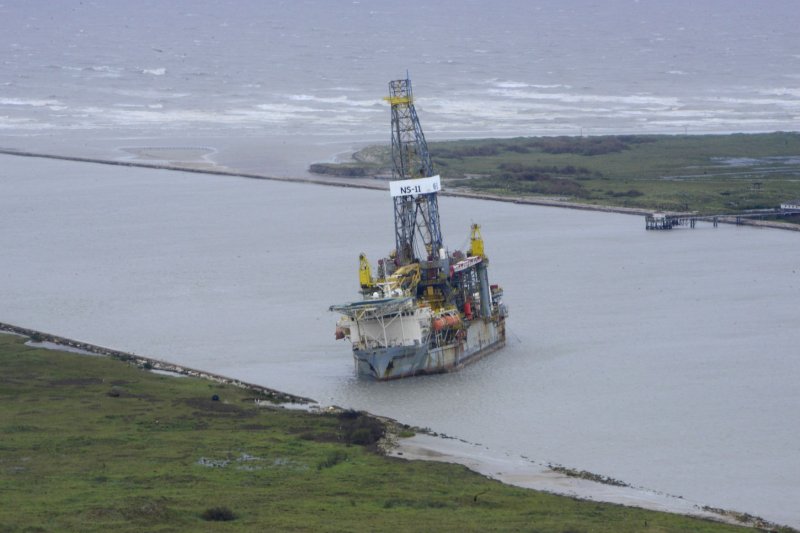The U.S. energy sector has been hit hard by what's left of Hurricane Harvey, with some of the more lucrative shale basins in the country directly in its path. Photo by Johanna Strickland/U.S. Coast Guard |
License Photo
Aug. 28 (UPI) -- With as much as 4 feet of rain expected in some areas, Tropical Storm Harvey sidelined about half of the regional refining capacity, industry reports said.
Harvey strengthened to a Category 4 storm during the weekend, but has since dissipated to a tropical storm with historic rains. The National Hurricane Center in Miami, Fla., reported the storm moving slowly northeast with sustained winds near 40 miles per hour. Harvey could gain strength late Monday or Tuesday and soak parts of the Houston metropolitan area with as much as 4 feet of rain.
Apache Corp. was just one of the companies in the region monitoring the situation.
"Apache's Houston office will be closed Monday, Aug. 28, due to flooding in the Houston area," the company stated.
The overall impact to the nation's energy sector is widespread. According to oil pricing group S&P Global Platts, at least 10 refineries have been or are in the process of being shutdown. About half of the region's refining capacity was idled by the storm.
Offshore, Anadarko Petroleum, one of the largest regional operators, said its offices inland were closed, but crews were returned to four platforms. Personnel were kept off three others until Harvey clears out.
In its latest update, British energy company BP said two of its platforms were operating at reduced rates because of storm-related closures to regional pipeline infrastructure.
"However, we continue to export crude from the facilities via alternate pipelines," the company said in a statement.
Platts estimated about a quarter of the U.S. offshore crude oil production was impacted by the storm. Inland, operators are closing wells down because many of the nation's most lucrative shale basins are in Harvey's path. The Eagle Ford shale basin, which accounts for about 10 percent of the total amount of crude oil produced daily in the United States, sits directly in the storm's path.
The United States could tap into its Strategic Petroleum Reserve to compensate for the shortages or rely on more imports. So far, the government hasn't issued orders for an SPR release. There are 678 million barrels stored currently in the strategic reserve.
The nation-wide average retail price for a gallon of gasoline is up only slightly from last week, though it will likely take several days for the refinery and production outages to make their way to the consumer level.
Asked how long it would take for the refinery situation to return to normal, Patrick DeHaan, a senior petroleum analyst with GasBuddy, told UPI it would be at least a few weeks, "maybe more than a month depending on how quickly flood waters in Houston recede."















